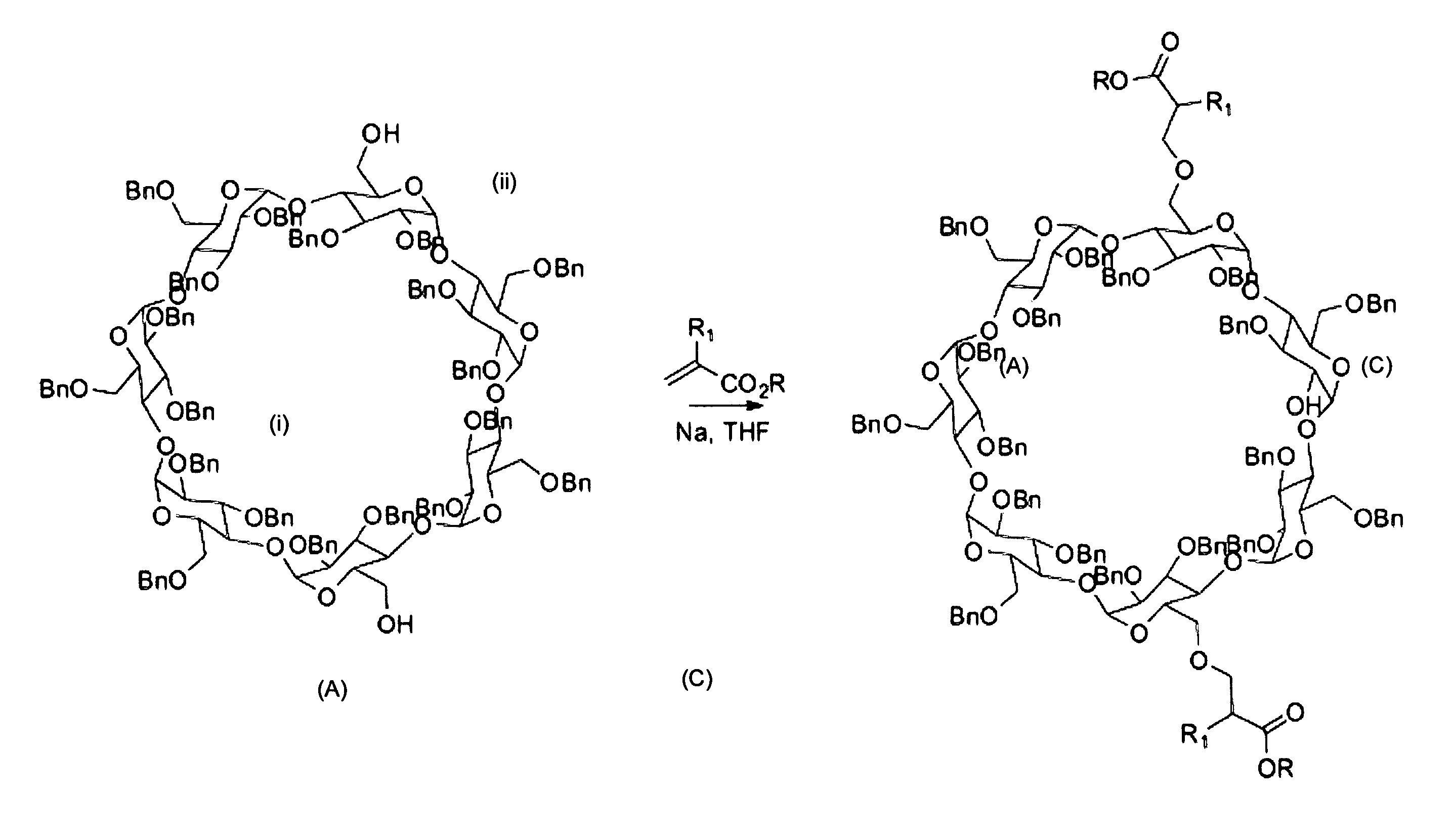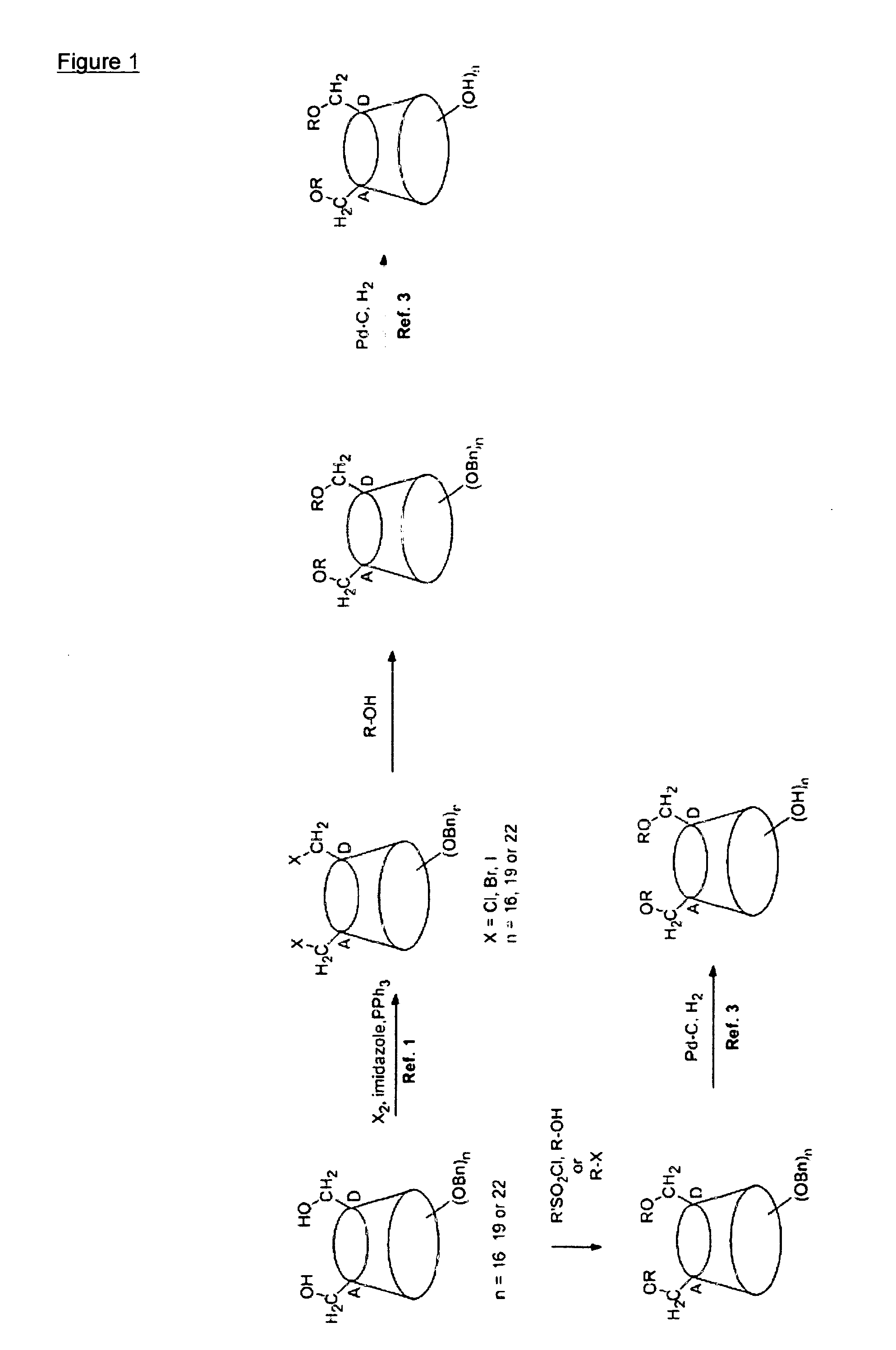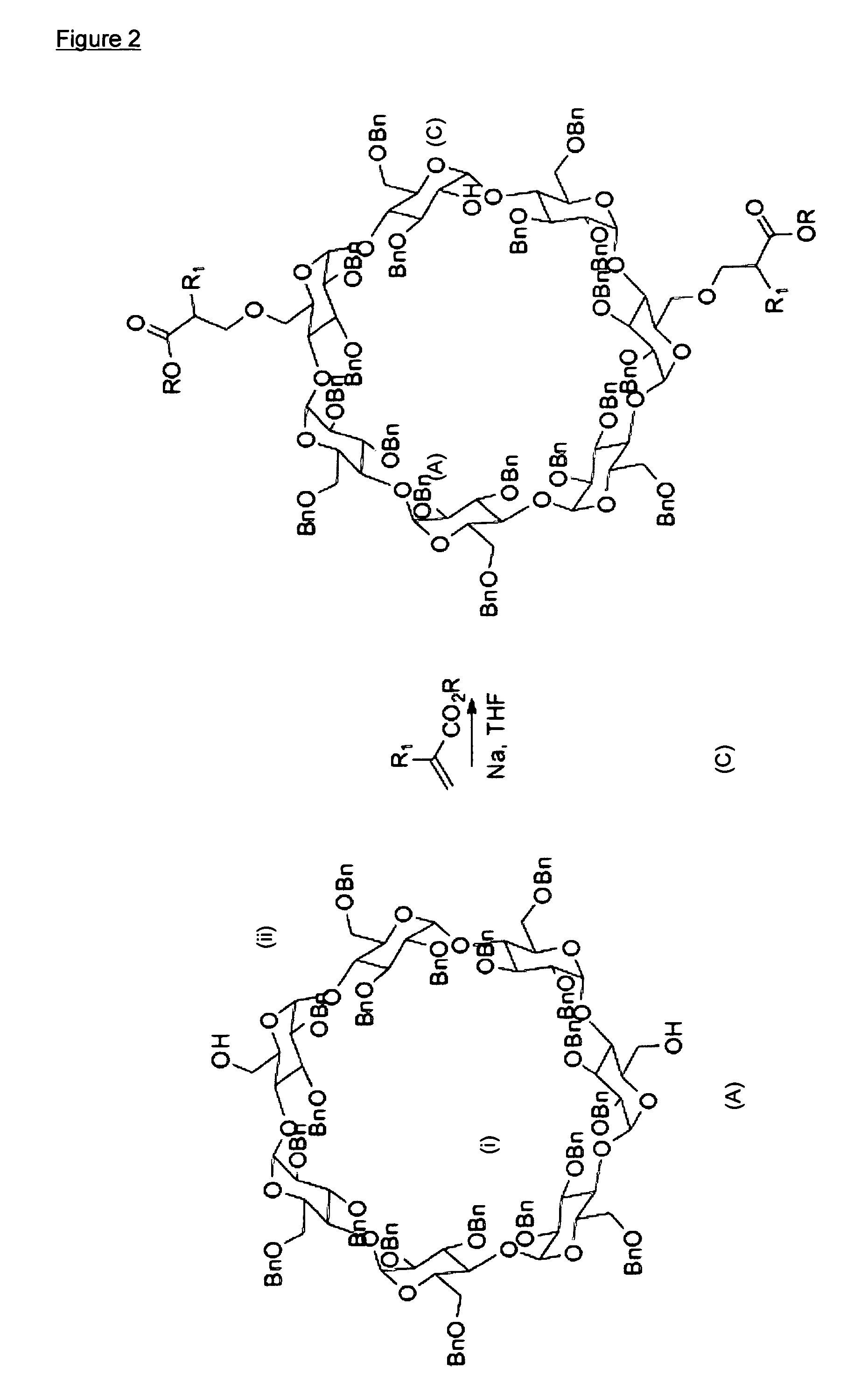Substituted Cyclodextrin Derivatives Useful As Intermediates For Producing Biologically Active Materials
a technology of cyclodextrin and derivatives, which is applied in the field of substitution of cyclodextrin derivatives, can solve the problems of few or inadmissible for regulatory and quality control reasons the situation of structural variability resulting from random substitution with average degrees of substitution representative of mixtures of compounds
- Summary
- Abstract
- Description
- Claims
- Application Information
AI Technical Summary
Benefits of technology
Problems solved by technology
Method used
Image
Examples
example 1
[0105]The synthetic procedure of this example follows the principles schematically shown in FIG. 1, and more precisely the details shown in the reaction scheme 1 hereinbelow.
[0106]Starting Compound (1):
[0107]The starting material 1 (obtained in 2 steps from β-cyclodextrin) was allylated using allyl bromide in presence of sodium hydride and DMF as solvent employing a known procedure, as described in (a) Fenger et al. Org. Biomol. Chem. (2009) 7, 933-943.
[0108]Synthesis of Compound (2):
[0109]To a solution of compound 1 (1.0 g, 0.35 mmol) in DMF (10 mL) was added NaH (60% dispersion in mineral oil, 71 mg, 1.75 mmol) at 0° C. and the mixture was stirred for 30 min. Allyl bromide (185 μL, 2.11 mmol) was added, and the reaction mixture was stirred overnight at room temperature. Volatile materials were removed under reduced pressure. The residue was partitioned between ethyl acetate and water. The organic layer was separated, dried over anhydrous MgSO4, and filtered. The residue after evap...
example 2
[0123]The synthetic procedure of this example follows the principles schematically shown in FIG. 2, and more precisely the details shown in FIGS. 3-5. The starting compound 1 was made according to the teaching of Pearce et al in Angew. Chem. Int. Ed. (2000) 39:3610-3612 for the regioselective di-de-O-benzylation of perbenzylated β-cyclodextrin.
Addition of the Acrylate (FIGS. 2-3):
[0124]The procedure for the 1,4-addition of compound 1 to an acrylate was as follows. To a solution of compound 1 (1.0 g, 0.35 mmol) in dry tetrahydrofuran (THF) (10 mL) was added a freshly cut sodium metal (˜6 mg, 0.043 mmol) and stirred for 30 minutes. Tert-butyl acrylate (130 μL, 1.0 mmol) was added at 0° C. and stirred at room temperature for 24 hours. Reaction was quenched by addition of water. Products were extracted with ethyl acetate. The organic layer was dried over anhydrous MgSO4 and the solvent removed under reduced pressure. Purification by column chromatography afforded two products (Thin laye...
example 3
[0145]The synthetic procedure of this example follows the principles schematically shown in FIG. 2, and more precisely the details shown in Scheme 2 hereinbelow. The starting compound 1 was made (steps 1 & 2) according to the teaching of Pearce et al in Angew. Chem. Int. Ed. (2000) 39:3610-3612 for the regioselective di-de-O-benzylation of perbenzylated β-cyclodextrin.
Addition of the Propiolate (Step 3):
[0146]The procedure for the 1,4-addition of compound 1 to an propiolate ester was as follows. To a solution of compound 1 (4.0 g, 1.405 mmol) in dichloromethane (30 mL) was added N-methylmorpholine (0.772 mL, 7.02 mmol) and benzyl propiolate 7 (1.125 g, 7.02 mmol). The reaction mixture was stirred at ambient temperature. After 2 hours the starting material was consumed and a new major spot was visible on TLC. The reaction mixture was concentrated to dryness and purified by flash column chromatography to yield the desired product (Compound 4): 454 mg (68%), single spot on TLC. 1H-NMR ...
PUM
| Property | Measurement | Unit |
|---|---|---|
| mass | aaaaa | aaaaa |
| nuclear magnetic resonance spectrum | aaaaa | aaaaa |
| molecular structure | aaaaa | aaaaa |
Abstract
Description
Claims
Application Information
 Login to View More
Login to View More - R&D
- Intellectual Property
- Life Sciences
- Materials
- Tech Scout
- Unparalleled Data Quality
- Higher Quality Content
- 60% Fewer Hallucinations
Browse by: Latest US Patents, China's latest patents, Technical Efficacy Thesaurus, Application Domain, Technology Topic, Popular Technical Reports.
© 2025 PatSnap. All rights reserved.Legal|Privacy policy|Modern Slavery Act Transparency Statement|Sitemap|About US| Contact US: help@patsnap.com



